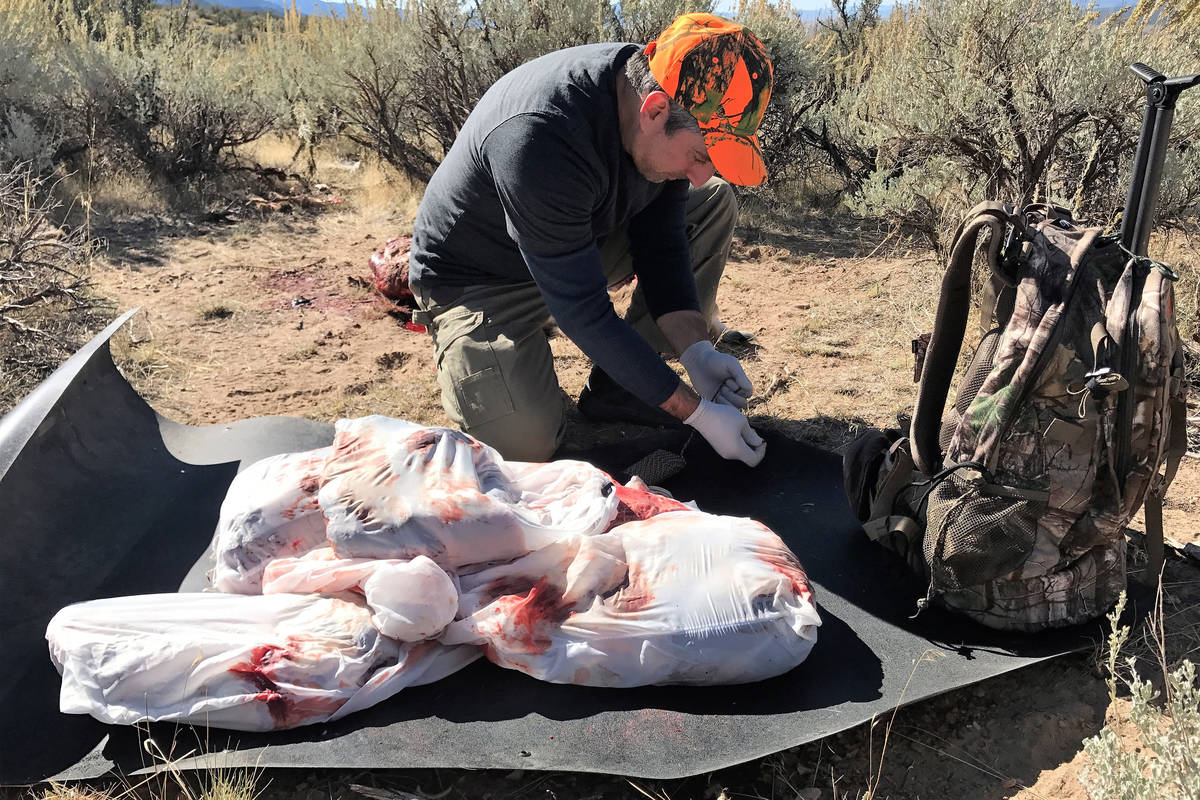3 words that should be top of mind for every hunter
Cool, clean, and dry. Those are the three most important words a hunter needs to keep in mind when heading afield. Not only for those lucky enough to draw a big game tag, but for those hunting small game or birds as well.
While they won’t determine whether you find the game you are seeking, or help you make the shot when the time comes, those words will make a big difference in the quality of the final product when you serve up your hard-earned game meat on the dinner table. This is true whether you are hunting pronghorn in August, doves in September or deer in late October.
Whatever you are hunting, the first step in taking care of a downed animal or bird is to cool it down. Keep in mind that the hair, fur, or feathers are insulating layers, not unlike a coat or sleeping bag. With big game animals, the further into fall we are, the thicker that insulating layer will be and the longer it will hold the animal’s body heat. That heat will cause bacteria to grow. If left to grow unchecked, that bacteria will ruin your meat.
In addition to that outer insulating layer, the entrails inside also retain heat, and the meat you are looking for is sandwiched between the two. To cool the meat down, you must separate it from both.
Traditionally, that process starts with gutting the animal, or removing the entrails, which is followed by skinning the carcass. Today, however, many hunters are opting to use what has been called the gutless method. As that name implies, the entrails are left where they are, and the hunter works only from the outside.
With the gutless method you remove the hide as you go. It gives you the option of simply quartering the carcass or boning it out. The option you choose will most likely depend on how far you have to travel to reach your means of transportation or camp and how much help you have.
If you quarter or bone out the carcass, you can keep the meat clean by placing it in game bags designed specifically for that purpose. There are several products on the market that make the process quite easy, that allow the hunter to separate the meat into small packages. And best of all, the packages are washable. They allow air circulation that will cool the meat while keeping flies and dust out.
If you prefer to hang the whole carcass, you can keep it clean with a quality game bag that is made to fit. Be sure to avoid cheesecloth bags as they let dust and flies into the carcass. I have found good success with a homemade bag made from a cotton twin bed sheet. It lets the carcass breath but protects it from dust and flies.
Do not let the carcass hang too long, however. Unless daytime temperatures are cold and nighttime temperatures near or below freezing, you need to get it to a meat packer in short order.
With birds and rabbits you can buy time simply by removing the entrails. Then you can finish the job when you get back to your cooler. There you can remove the feathers and let the breast or whole carcass cool down before placing it in a plastic bag on ice. Do not put it on ice while it is still warm.
The challenge is keeping your game meat dry when you put it in a cooler. Though I have had some success using block ice, that can be iffy at best. Sitting in water from melted ice is not good for the meat you have worked so hard to get. I prefer to use plastic milk jugs or juice containers that have been filled with water and frozen.
If you start now, you can have several jugs ready to go by the time a September or October hunt begins. Not only will this enable you to keep your game meat dry, but it also provides a source of emergency drinking water.
The key to tasty table fare is keeping your harvested game meat cool, clean, and dry. There are many options for keeping it clean and dry. But when it comes to keeping it cool, your options are limited and always begin with removing that insulating layer. Be sure to follow any regulations governing proof of sex.
Freelance writer Doug Nielsen is a conservation educator for the Nevada Department of Wildlife. His “In the Outdoors” column is not affiliated with or endorsed by the NDOW. Any opinions he states in his column are his own. Find him on Facebook at @dougwritesoutdoors. He can be reached at intheoutdoorslv@gmail.com.




























